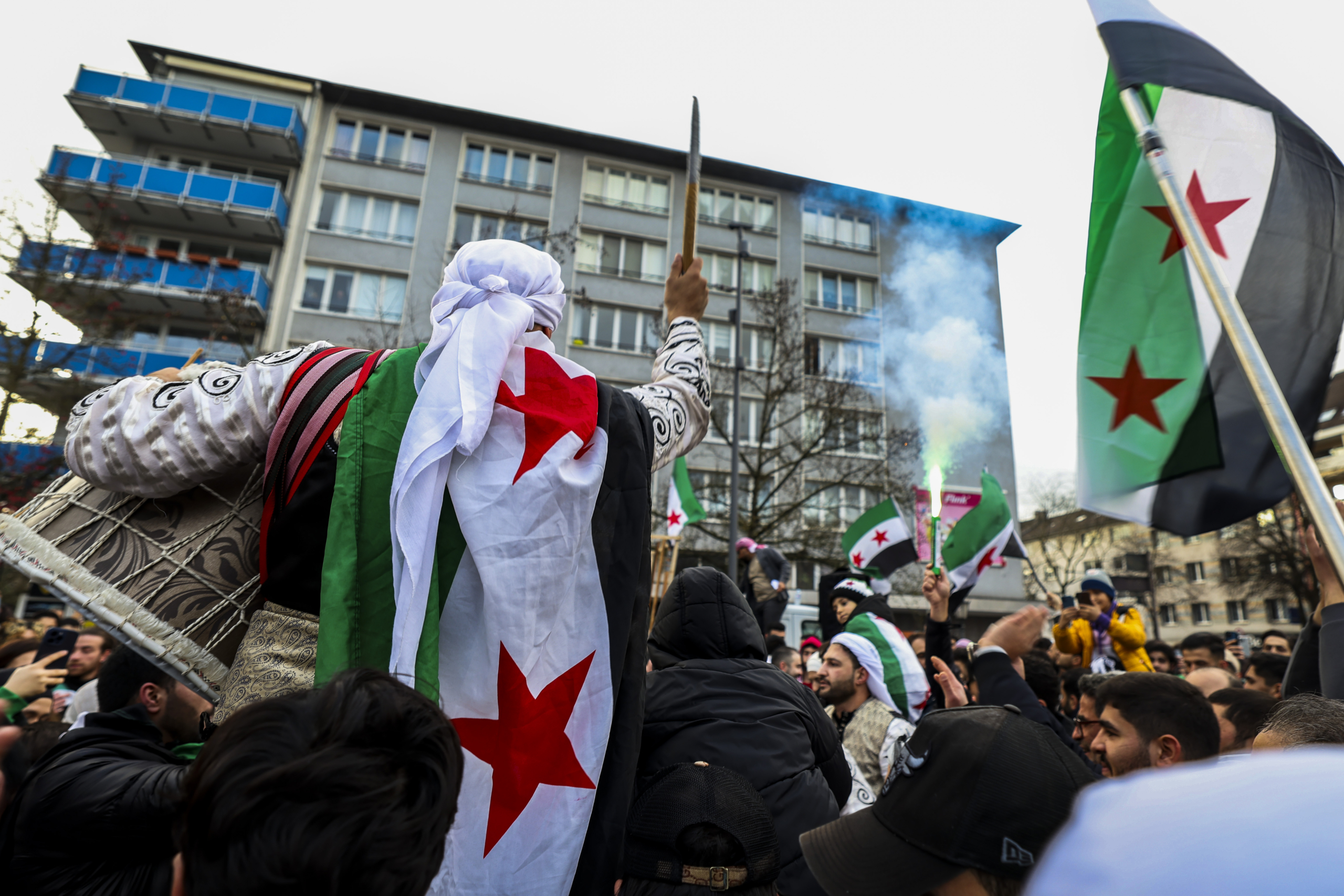Sign up for The Media Today, CJR’s daily newsletter.
This month, after fifty-four years of tyranny and violence in Syria, the regime of Bashar al-Assad came to a rapid end. Over twelve days, the country swelled with hope and relief. Journalists who had been working in exile were suddenly able to return home—including Dima Izzedin, who broke into tears while reporting the news again at last, after fourteen years, live from Damascus. Media coverage around the world was dominated, perhaps understandably, by images of freedom. But that left little room for other plot points—Israeli air strikes in Syria, the cutting of electricity and water lines—that complicated the reality on the ground.
The fall of Assad was a fast-moving story, which caught news organizations off guard. In the days that followed his departure from the country, on December 8, a rush of foreign journalists parachuted in to uncover the horrors he had wrought, interviewing survivors and families still looking for loved ones. As they competed for scoops, they often seemed out of their depth. In an especially embarrassing instance, CNN’s Clarissa Ward documented in real time the “release” of a supposed prisoner who a fact-checking media platform later revealed was a member of Syrian air force intelligence. Going forward, foreign reporters would be well served by following the work of Syrian journalists, who know the place best.
One of the first reporters with whom I spoke in the days that followed Assad’s ouster was Zaina Erhaim, an award-winning Syrian journalist based in London and a media and gender consultant in the Middle East and North Africa region. “Journalists should be paying attention to what is happening and how people are living what is happening from different backgrounds, specifically oppressed backgrounds,” she advised. “Rather than imposing their own prejudices and stereotypes on them.” A common mistake among outsiders coming in, she observed, has been asking Syrians to compare their situation to regime changes elsewhere. “Instead of saying ‘Is this going to be leading to where Libya was?’ ask them open questions,” she told me. “Meet women who were living under the control of rebel groups in 2013 and 2014. They will say what they witnessed, the resistance that they have.”
Ola Salem, the managing editor of New Lines, a magazine that specializes in connecting world history to current events, agrees. “One of the typical ways of thinking about the conflict is how previous conflicts played out,” she said. “Because of Iraq and Libya, journalists and others immediately drew comparisons to the chaos that followed the euphoria, as if that’s inevitable. Warning about chaos is needed, but that’s different from framing it in the same terms. Syria was liberated by its own people, and the regime’s fall did not happen as a result of a foreign invasion.” Salem, who is Egyptian American, has felt that some of the best coverage of the events of the past month has come from Syria TV, “whose reporters embedded with the rebels and covered every aspect of the developments from the front lines,” she noted.
Ranim Badenjiki, a human rights defender from Aleppo, has been based in Rabat, Morocco, for almost a decade. For seven years, she has been part of the Syria Campaign, fighting alongside activists and campaigners for a free and democratic Syria. Badenjiki, who has monitored the recent news obsessively, witnessed a great deal of misinformation spread online. “International media is very selfish, very insensitive,” she told me. “Everyone was racing to get exclusives and get the most dramatic story ever.” A number of reporters, she observed, rushed to Sednaya, where Syrian prisoners had been held underground, as if it were “a museum,” she said. “They would go and start reporting on everything, stepping on paper on the ground and treating the prison as if it’s not a crime scene.” In the frenzy, evidence of imprisoned people was lost—computers went missing, hard drives were stolen, and DNA evidence was tampered with—making it harder for Syrians to track down their loved ones.
“It’s important for journalists to do textured and nuanced coverage of the impact of these autocratic regimes and dictatorships,” Mohamad Bazzi, the director of the Hagop Kevorkian Center for Near Eastern Studies and a journalism professor at New York University, told me. “But it’s also important to pivot the coverage rather quickly and step back with the wider lens and look at the historical ramifications.” What we’ve been seeing lately is all too familiar: the treatment of a major historical event in the Middle East with an excessive focus on emotion, at the loss of analysis, chronology, and expertise. Presenting the story of Assad’s collapse with tunnel vision—often unaware of context or simply dismissive of it—reduces Syrians to passive subjects in front of a camera.
Erhaim has found that, after years away from Facebook, she’s been able to talk with many valuable contacts there: “Syrians are trying to focus on themselves and other Syrians,” she said, “rather than the international community and international media that’ve been let down by so many times.”
Has America ever needed a media defender more than now? Help us by joining CJR today.



